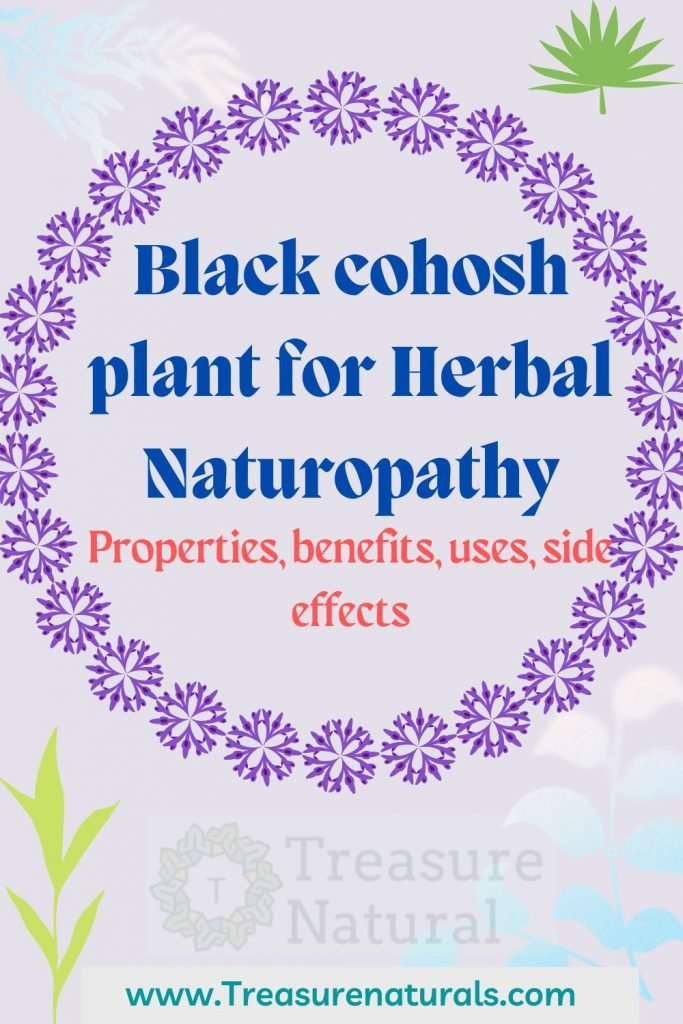
The black cohosh (Cimicifuga racemosa) belongs to the Ranunculaceae family. Known for its anti- inflammatory and rebalancing properties, it is useful for relieving ailments related to menopause. Let’s find out better.
Properties of the black cohosh
The root of black cohosh contains triterpene glycosides (actein and 27-deoxyactein), alkaloids, fatty acids, salicylic acid, tannins, cimicifugin or macrotin (resin), racemosin, flavonoids, trace elements that give the plant anti- inflammatory properties, and rebalance the hormonal system, due to the plant’s ability to mimic serotonin and thus relieve the autonomic disorders of menopause and hot flashes .
In fact, scientific research has shown that the use of black cohosh on disorders related to the period of menopause has led to improvements in autonomic symptoms such as hot flashes, sweats, headaches, dizziness, heart palpitations, ringing in the ears, nervousness and irritability, disturbances sleep and depressive states.
The phytoestrogens of the black cohosh are in fact able to bind to the receptors for serotonin located in the hypothalamus (a nucleus of nerve cells located in the lower part of the brain), thus carrying out an action similar to that of this neurotransmitter useful in the treatment of menopausal syndrome, premenstrual syndrome, dysmenorrhea (painful menstruation) and oligomenorrhea (low menstruation).
Furthermore, from these studies it emerged that the plant tends to reduce the levels of calcium and phosphorus in the blood, and favor the increase in bone mass, thus justifying its use to combat osteoporosis typical of postmenopausal women.
Finally, black cohosh is also used as an anti-inflammatory and antirheumatic remedy, in particular in patients with arthrosis, muscle pain and neuralgia resulting from rheumatic events, and it seems quite active also against headaches, particularly in those of musculotensive origin.
How to use
INTERNAL USE
Currently on the market, black cohosh is found in dry extract, titrated at 2 -5% in triterpenes and the recommended dose is 40 mg per day for menopausal and climacteric disorders. The herbal tea and mother tincture – on the other hand – do not offer guarantees on the constancy of the active ingredients.
DECOCT: 1 level tablespoon of cabbage root, 1 cup of water
Pour the chopped root into cold water, turn on the heat and bring to a boil. Boil for a few minutes and turn off the heat. Cover and leave to infuse for 10 min. Filter the infusion and drink it between meals to take advantage of the anti-inflammatory action on menstrual pain, headache and neuralgia.
– Black cohosh mother tincture : 30 drops 2-3 times a day
– Black Cohosh dry extract : 40 mg twice a day, morning and evening to counteract menopausal disorders
Contraindications of black cohosh
Black cohosh seems to have no significant side effects, not even for treatments at rather high doses and for quite long periods of time, but it is still contraindicated in pregnancy because it can increase the contraction of uterine smooth muscles, and during breastfeeding.
Description of the plant
Perennial herbaceous plant, with 1.20 m tall glabrous stem, which can reach 2.60 m. when fully flowering. The leaves are broad, alternating, compound, tri-ternate, originating from short sessile petioles. The long white flowers are found on a terminal branched raceme. The most typical feature of the flowers are the numerous stamens, consisting of thin filaments with white anthers. Four or five small, concave white sepals are larger than the almost insignificant petals. The solitary white pistil is hairless and sessile. The fruit is a dry, oval veined follicle that divides along a ventral suture with 8 to 10 triangular and brown seeds divided into two rows.
The habitat of the black cohosh
Native to the east coast of the United States and Canada. It prefers shady locations in the woods and scrub, with humid and humus-rich soils, typical of the partially sunny and humid areas of the North American continent.
Background
The curious name cimicifuga, coined by Linnaeus, alludes to the presumed insect repellent activity attributed to this plant, due to the disgusting and fetid odor it emanates, which to date has no proof of validity.
The Chinese classified Black Cohosh as a bitter, cold plant that reduces heat and toxicity and is used to treat inflammatory states caused by excess heat.
The Native Americans used this plant for menstrual problems, childbirth (to facilitate it) and menopause and the name Squaw Root (root of the squaw) implies its importance as a female plant. Other uses included the use as a diaphoretic in various ailments and fevers, the use of the decoction externally for rheumatic problems and the external use of the root as an antidote to snake bites.
These observations, reported by ethnobotanical scholars, aroused the attention of European scientists, who started the first clinical and experimental studies after 1732, the year in which the black cohosh was introduced in Europe.






